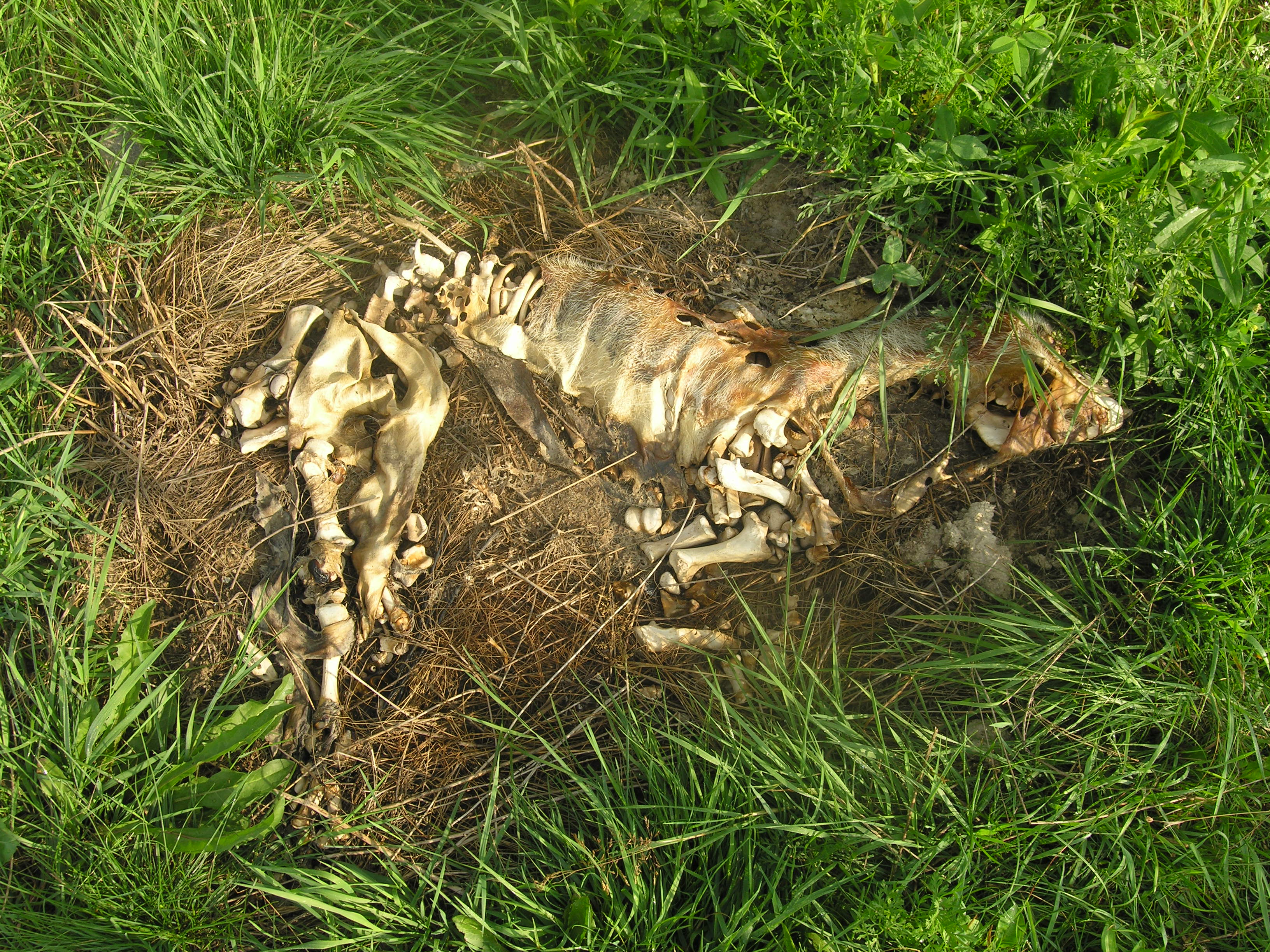|
Hymenaea Mexicana
''Hymenaea mexicana'' is an extinct legume species in the family Fabaceae described from a series of isolated fossil petals, leaflets, and amber. The species is known from a group of Late Oligocene to Early Miocene locations in southern Mexico. It is one of two extinct ''Hymenaea'' species placed close to the living species ''Hymenaea verrucosa'' and along with ''Hymenaea allendis'', is one of the two extinct species which have been found in Mexican amber. History and classification ''Hymenaea mexicana'' is known from a series of fossil flowers and leaves which are inclusions in transparent chunks of Mexican amber. The species where the amber was also found in was in Brazil which could indicate where the specie Hymenaea mexicana could have been located as well. The specimens were collected over the course of twenty five years with a total of thirty amber specimens being examined for the description of the species. Mexican amber is recovered from fossil-bearing rocks in the Sim ... [...More Info...] [...Related Items...] OR: [Wikipedia] [Google] [Baidu] |
Late Oligocene
The Chattian is, in the geologic timescale, the younger of two ages or upper of two stages of the Oligocene Epoch/Series. It spans the time between . The Chattian is preceded by the Rupelian and is followed by the Aquitanian (the lowest stage of the Miocene). Stratigraphic definition The Chattian was introduced by Austrian palaeontologist Theodor Fuchs in 1894. Fuchs named the stage after the Chatti, a Germanic tribe.Berry, Edward W"The Mayence Basin, a Chapter of Geologic History" ''The Scientific Monthly'', Vol. 16, No. 2, February 1923. pp. 114. Retrieved March 18, 2020. The original type locality was near the German city of Kassel. The base of the Chattian is at the extinction of the foram genus ''Chiloguembelina'' (which is also the base of foram biozone P21b). An official GSSP for the Chattian Stage was ratified in October of 2016. The top of the Chattian Stage (which is the base of the Aquitanian Stage, Miocene Series and Neogene System) is at the first appearance of ... [...More Info...] [...Related Items...] OR: [Wikipedia] [Google] [Baidu] |
Simojovel
Simojovel is one of the 119 municipalities of Chiapas, in southern Mexico. As of 2010, the municipality had a total population of 40,297, up from 31,615 as of 2005. It covers an area of 446.99 km2. The municipality had 145 localities, the largest of which (with 2010 populations in parentheses) were: Simojovel de Allende (10,762), the municipal seat classified as urban, and Pueblo Nuevo Sitala (2,437), La Pimienta (1,755), El Jardín (1,626), La Ceiba (1,275), Las Maravillas (1,204), and Constitución (1,103), classified as rural. Economy Until 1990, the majority of the population worked on the harvest of coffee, but today mining and the Chiapan amber trade are the most important economic activities. It is also known for its gastronomic traditions inherited from their ancient Mayan Mayan most commonly refers to: * Maya peoples, various indigenous peoples of Mesoamerica and northern Central America * Maya civilization, pre-Columbian culture of Mesoamerica and nort ... [...More Info...] [...Related Items...] OR: [Wikipedia] [Google] [Baidu] |
Stamen
The stamen (plural ''stamina'' or ''stamens'') is the pollen-producing reproductive organ of a flower. Collectively the stamens form the androecium., p. 10 Morphology and terminology A stamen typically consists of a stalk called the filament and an anther which contains ''sporangium, microsporangia''. Most commonly anthers are two-lobed and are attached to the filament either at the base or in the middle area of the anther. The sterile tissue between the lobes is called the connective, an extension of the filament containing conducting strands. It can be seen as an extension on the dorsal side of the anther. A pollen grain develops from a microspore in the microsporangium and contains the male gametophyte. The stamens in a flower are collectively called the androecium. The androecium can consist of as few as one-half stamen (i.e. a single locule) as in ''Canna (plant), Canna'' species or as many as 3,482 stamens which have been counted in the saguaro (''Carnegiea gigantea'' ... [...More Info...] [...Related Items...] OR: [Wikipedia] [Google] [Baidu] |
Nogueirapis Silacea
''Nogueirapis'' is a genus of bees belonging to the family Apidae Apidae is the largest family within the superfamily Apoidea, containing at least 5700 species of bees. The family includes some of the most commonly seen bees, including bumblebees and honey bees, but also includes stingless bees (also used for .... The species of this genus are found in Southern America. Species: *'' Nogueirapis batistai'' *'' Nogueirapis butteli'' *'' Nogueirapis costaricana'' *'' Nogueirapis minor'' *'' Nogueirapis mirandula'' *'' Nogueirapis rosariae'' References {{Taxonbar, from=Q4045425 Meliponini Bee genera ... [...More Info...] [...Related Items...] OR: [Wikipedia] [Google] [Baidu] |
Stingless Bee
Stingless bees, sometimes called stingless honey bees or simply meliponines, are a large group of bees (about 550 described species), comprising the tribe Meliponini (or subtribe Meliponina according to other authors). They belong in the family Apidae, and are closely related to common honey bees, carpenter bees, orchid bees, and bumblebees. Meliponines have stingers, but they are highly reduced and cannot be used for defense, though these bees exhibit other defensive behaviors and mechanisms. Meliponines are not the only type of bee incapable of stinging: all male bees and many female bees of several other families, such as Andrenidae, also cannot sting. Some stingless bees have powerful mandibles and can inflict painful bites. Geographical distribution Stingless bees can be found in most tropical or subtropical regions of the world, such as Australia, Africa, Southeast Asia, and tropical America.Michener, C D. ''The bees of the World''. Johns Hopkins University Press, 972 pp. ... [...More Info...] [...Related Items...] OR: [Wikipedia] [Google] [Baidu] |
Gracillariidae
Gracillariidae is an important family of insects in the order Lepidoptera and the principal family of leaf miners that includes several economic, horticultural or recently invasive pest species such as the horse-chestnut leaf miner, ''Cameraria ohridella''. Taxonomy and systematics There are 98 described genera of Gracillariidae (see below). A complete checklist is available of all currently recognised species. There are many undescribed species in the tropics but there is also an online catalogue of Afrotropical described speci the South African fauna is quite well known. Although Japanese and Russian authors have recognised additional subfamilies, there are three currently recognised subfamilies, Phyllocnistinae of which is likely to be basal. In this subfamily, the primitive genus ''Prophyllocnistis'' from Chile feeds on the plant genus '' Drimys'' (Winteraceae), and has leaf mines structurally similar in structure to fossils (see "Fossils"). While there have been some rec ... [...More Info...] [...Related Items...] OR: [Wikipedia] [Google] [Baidu] |
Lepidoptera
Lepidoptera ( ) is an order (biology), order of insects that includes butterfly, butterflies and moths (both are called lepidopterans). About 180,000 species of the Lepidoptera are described, in 126 Family (biology), families and 46 Taxonomic rank, superfamilies, 10 percent of the total described species of living organisms. It is one of the most widespread and widely recognizable insect orders in the world. The Lepidoptera show many variations of the basic body structure that have evolved to gain advantages in lifestyle and distribution. Recent estimates suggest the order may have more species than earlier thought, and is among the four most wikt:speciose, speciose orders, along with the Hymenoptera, fly, Diptera, and beetle, Coleoptera. Lepidopteran species are characterized by more than three derived features. The most apparent is the presence of scale (anatomy), scales that cover the torso, bodies, wings, and a proboscis. The scales are modified, flattened "hairs", and give ... [...More Info...] [...Related Items...] OR: [Wikipedia] [Google] [Baidu] |
Skeletonization
Skeletonization is the state of a dead organism after undergoing decomposition.The Australian Museum. (2018). Decomposition-Body Changes. Retrieved from: https://australianmuseum.net.au/about/history/exhibitions/death-the-last-taboo/decomposition-body-changes/ Skeletonization refers to the final stage of decomposition, during which the last vestiges of the soft tissues of a corpse or carcass have decayed or dried to the point that the skeleton is exposed. By the end of the skeletonization process, all soft tissue will have been eliminated, leaving only disarticulated bones. Timeline In a temperate climate, it usually requires three weeks to several years for a body to completely decompose into a skeleton, depending on factors such as temperature, humidity, presence of insects, and submergence in a substrate such as water. In tropical climates, skeletonization can occur in weeks, while in tundra areas, skeletonization may take years or may never occur, if subzero temperat ... [...More Info...] [...Related Items...] OR: [Wikipedia] [Google] [Baidu] |
Botanical Journal Of The Linnean Society
The ''Botanical Journal of the Linnean Society'' is a scientific journal publishing original papers relating to the taxonomy of all plant groups and fungi, including anatomy, biosystematics, cytology, ecology, ethnobotany, electron microscopy, morphogenesis, palaeobotany, palynology and phytochemistry.Botanical Journal of the Linnean Society The journal is published by the and is available in both print and searchable online formats. Like the '' |
Species Description
A species description is a formal description of a newly discovered species, usually in the form of a scientific paper. Its purpose is to give a clear description of a new species of organism and explain how it differs from species that have been described previously or are related. In order for species to be validly described, they need to follow guidelines established over time. Zoological naming requires adherence to the ICZN code, plants, the ICN, viruses ICTV, and so on. The species description often contains photographs or other illustrations of type material along with a note on where they are deposited. The publication in which the species is described gives the new species a formal scientific name. Some 1.9 million species have been identified and described, out of some 8.7 million that may actually exist. Millions more have become extinct throughout the existence of life on Earth. Naming process A name of a new species becomes valid (available in zo ... [...More Info...] [...Related Items...] OR: [Wikipedia] [Google] [Baidu] |
Berkeley, California
Berkeley ( ) is a city on the eastern shore of San Francisco Bay in northern Alameda County, California, United States. It is named after the 18th-century Irish bishop and philosopher George Berkeley. It borders the cities of Oakland and Emeryville to the south and the city of Albany and the unincorporated community of Kensington to the north. Its eastern border with Contra Costa County generally follows the ridge of the Berkeley Hills. The 2020 census recorded a population of 124,321. Berkeley is home to the oldest campus in the University of California System, the University of California, Berkeley, and the Lawrence Berkeley National Laboratory, which is managed and operated by the university. It also has the Graduate Theological Union, one of the largest religious studies institutions in the world. Berkeley is considered one of the most socially progressive cities in the United States. History Indigenous history The site of today's City of Berkeley was the territo ... [...More Info...] [...Related Items...] OR: [Wikipedia] [Google] [Baidu] |
Oregon State University
Oregon State University (OSU) is a public land-grant, research university in Corvallis, Oregon. OSU offers more than 200 undergraduate-degree programs along with a variety of graduate and doctoral degrees. It has the 10th largest engineering college in the nation for 2022. Undergraduate enrollment for all colleges combined averages close to 32,000, making it the state's largest university. Out-of-state students make up over one-quarter of undergraduates and an additional 5,500 students are engaged in graduate coursework through the university. Since its founding, over 272,000 students have graduated from OSU. It is classified among "Doctoral Universities – Very high research activity". Chartered as a land-grant university initially, OSU became one of the four inaugural members of the Sea Grant in 1971. It joined the Space Grant and Sun Grant research consortia in 1991 and 2003, respectively, making it the first public university and one of just four in total to attain memb ... [...More Info...] [...Related Items...] OR: [Wikipedia] [Google] [Baidu] |







